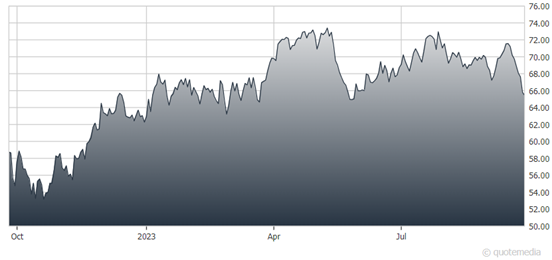$370 billion: That’s the investment Edison International (EIX) CEO Pedro Pizarro says is needed for California’s power grid to meet the state’s “net zero” goal for CO2 emissions by 2045. Assuming this investment is made, it’s relatively easy to put together a list of beneficiaries. But the surest, biggest beneficiaries of California’s drive to Net Zero are the utilities, and Edison has the clearest path, suggests Roger Conrad, editor of Conrad’s Utility Investor.
Getting there will require replacing fossil fuels with electricity in transportation, HVAC systems for buildings, and industrial processes. Combined with population growth and data demand potentially augmented by artificial intelligence, that adds up to an 82 percent increase in electricity demand over 22 years, or 3 percent annually.
Meanwhile, Edison has reduced the number of destroyed structures and acres burned in its service territory in fires involving its equipment by 98 percent and 92 percent respectively in just five years. Outright shutoffs are now used as a fire prevention strategy just “10 percent of the time.” And credit rater Moody’s calculates fire damage risk now 85 percent lower since 2017-18, and still dropping.
Edison is currently requesting California regulators OK recovery over a 30-year period of $2.4 billion in losses related to 2017 wildfires. Assuming an amicable decision by early next year, management can then turn its attention to upgrading the grid. That investment is expected to generate long-term rate base growth of 8 percent per year, fueling 5 to 7 percent annual earnings growth through 2028 with commensurate dividend increases.
Edison International (EIX)

That’s a strong value proposition for Edison stock, which trades at just 14 times expected next 12 months earnings. The yield of roughly 4.4 percent at recent prices was increased 5.4 percent this year and is headed for a similar boost in December.
When California deregulated electricity in 1996, it required utilities with rare exceptions to divest their power generation. As a result, Edison’s growth opportunity is 100 percent upgrading its transmission and distribution grid. And its projects can typically be proposed, sited, permitted and built in less than a year, limiting risk of cost overruns to ensure regulatory approval and strong investment returns.
Edison’s investment plan is also pretty much immune to an unlikely backtracking on Net Zero goals by the state. And the company has a cost argument as well: Dr Pizarro cites US Department of Energy and Department of Transportation data to project inflation-adjusted savings of 40 percent in California’s total customer energy bills from full electrification.
At the end of the day, political will is likely to be as important as future technological advance for how much of Pizarro’s $370 billion actually gets spent. And the same will be true across the US, with state governments and regulators still by and large calling the shots for how electricity gets generated, transmitted, and distributed—as well as who pays for it and how much.
Recommended Action: Buy EIX.




















